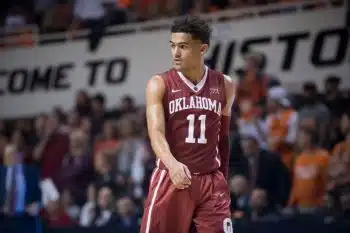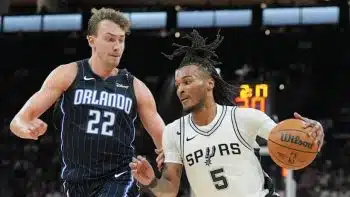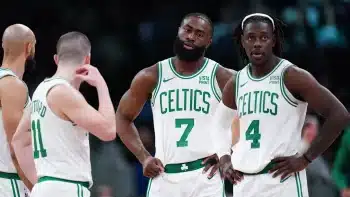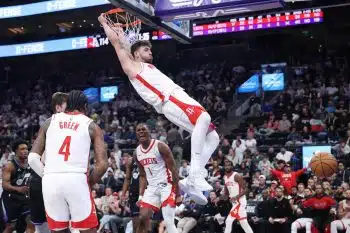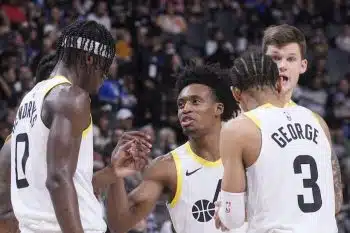NBA
NBA PM: Amir Johnson Developing Offensive Repertoire

Pop quiz: What does Rome and Amir Johnson’s offensive repertoire have in common?
Neither was built in a day.
Johnson’s name may not necessarily be the first to come to mind when considering who the more underrated power forwards in the NBA are, but he has become known for his consistent productivity.
Since being selected with the 56th overall pick of the 2005 NBA Draft, Johnson has slowly and steadily carved out a niche for himself in the NBA, going from a forgotten about spare piece with the Detroit Pistons to a necessary rotation player with the Toronto Raptors.
Now, as a member of the Boston Celtics, he has the opportunity to become so much more. And it is an opportunity he is seizing.
“He just knows how to play both ends,” head coach Brad Stevens said of Johnson. “He makes easy plays with the ball, and then on the defensive end, he makes everyone better.”
For most of his career, Johnson has been regarded as a difference maker on the defensive end only, but slowly, he has developed into a valuable weapon on the offensive end. His timing and instincts have developed tremendously and his value as a pick-and-roll finisher is obvious to anyone who has played with him.
Now, Johnson is attempting to take the next step and become a more consistent scorer. Most notable, though, is his seemingly increasing proficiency with shooting the basketball.
Over the course of the past five years, Johnson has been slowly extending his shooting range. Back in 2010-11, as a member of the Raptors, Johnson shot 56.8 percent from the field with about 56 percent of his shot attempts coming within three feet of the basket. In contrast, over the last three seasons, Johnson’s overall percentage of shots occurring within three feet of the basket were 46 percent, 43 percent and 49 percent, respectively.
While his shots attempts and minutes have varied, Johnson’s overall shooting percentage has remained remarkably consistent. Over the past four years, he has shot right at his career conversion rate of 57.3 percent, and he has done this despite taking a higher percentage of his shots further from the basket.
What is most shocking about Johnson’s newfound shooting proficiency, however, was last season’s revelation. The power forward emerged as a legitimate three-point threat, knocking down 41 percent of the looks he took from deep last season. That he only attempted 41 three-pointers is worth noting due to its small sample size, but for any NBA player, converting at that rate is no laughing matter.
To put this into further perspective, consider that in Johnson’s first eight seasons in the NBA, he attempted a total of 29 three-pointers.
In the past two seasons, he has attempted a total of 112. In those two seasons combined, he has converted at a respectable 35 percent clip.
His newfound three-point prowess has surprised many people. Just not Johnson.
“I always could shoot,” the new Celtic said. “I always just played within our principles and our offense as a team [in Toronto].
“I’ve been working on it in the summer. I work on my shot every summer. That’s what I do most of the time, I’m just starting to knock them down now.”
Aside from three-point shooting, however, Johnson is also learning to become a more versatile offensive player. In Coach Stevens’ read-motion offense, the majority of minutes will be played by players who are adept at both moving off of the basketball and finding streakers and cutters.
Johnson recites Stevens’ offensive principles as if they have already been drilled into his head.
“It’s just playing within Coach Stevens’ offense: move the ball, swing, simple pass, shot, drive, roll,” Johnson said. “You know, it’s just the offense we have and it just provides open shots.”
Open shots that he is now showing an ability to convert.
After signing Johnson to a two-year, $24 million contract this past summer, the Celtics are hoping that he and the newly acquired David Lee can help them continue their ascent as a rising team in the Eastern Conference. In his new beginning, Johnson has found an opportunity to not only be a part of a winning program, but to be recognized as a key leader within that winning program.
“I’m still getting adjusted, our new guys are getting adjusted, the young guys are getting adjusted and we’re still working to learn how to play with each other and who plays well with who,” Johnson said, acknowledging that although preseason games don’t count in the win-loss column, that they do count for something.
“I say they definitely matter,” he said. “Shaking the cobwebs out, getting used to playing with each other, these games definitely matter. It’s all about us getting better as a team, working on defense, offensively; it’s all about us.”
So what about them, these Celtics? Can they compete in a conference that—at least on paper—seems to already have eight legitimate playoff teams?
The answer there is yes, but it will require Stevens continuing to maximize the talent on his roster and consistently finding ways to improve his players.
His offense, which Johnson is enjoying learning, is a major part of that.
“You recognize stuff once you keep doing the same stuff over and over in practice and you just recognize scenarios where you can just play,” Johnson said. “You don’t have to wait for a play, you can just go and drive. It just comes down to playing the game.”
As he continues to find his way in Boston and develop his talents as a more consistent shooter, Johnson will continue to work hard and play the game. And yes, for the 2015-16 season, for these Celtics, as Johnson said, it will just come down to playing the game.
How far they go, though, may come down to how well he plays.
